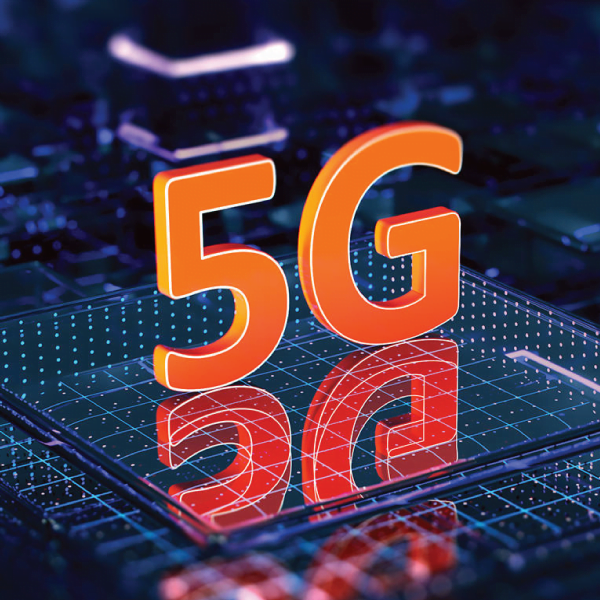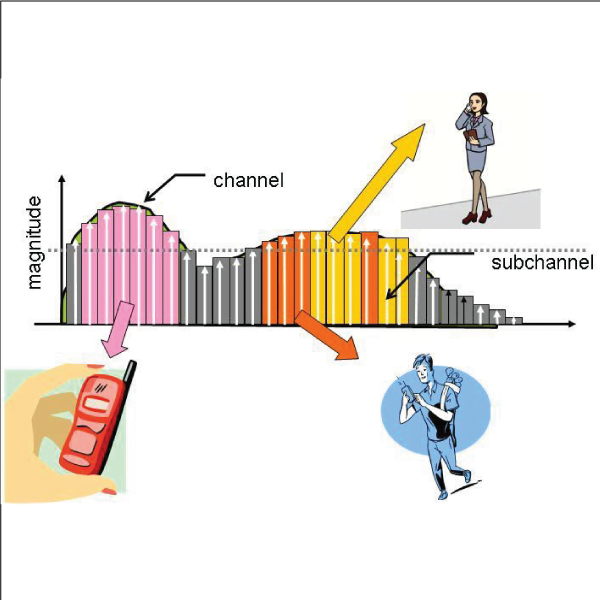Description
Performance Evaluation For 5G Nr Based Mm-Wave Mimo Systems Under Urban Micro Cell
ABSTRACT
The Massive Multi-Input Multi-Output (MIMO) is a key technology driver that improves spectrum efficiency. It is manifested by the use of a large number of antennas at the base station (up to a few hundred antennas) to serve, simultaneously, a higher number of users with the same time and frequency resources as well as a large multiplexing gain and an array diversity gain. Compared to conventional MIMO systems that use large beam sectors, which require Higher Power Amplifiers (HPA) which consume most of the energy of the base station, massive MIMO utilizes narrow beams to direct wireless energy to target users. Hence, there is no need for HPA that consumes most of the energy. The main objective of massive MIMO is to increase throughput, spectrum efficiency, reliability and energy efficiency. Among the most importing massive MIMO techniques that will improve energy performance in future mobile networks is the use of a large number of antenna elements for very selective beam-formed transmission. Performance Evaluation For 5G Nr Based Mm-Wave Mimo Systems Under Urban Micro Cell
Performance Evaluation For 5G Nr Based Mm-Wave Mimo Systems Under Urban Micro Cell
INTRODUCTION
Massive MIMO is a promising technology in order to increase both capacity and to reduce power consumption for 5G systems. MIMO is the most prominent technology in the fourth generation systems and is used to improve the spectral efficiency of the network. MIMO technology provides both multiplexing gain and diversity gain. Diversity gain can be obtained by transmitting the same signals through various paths from the transmitter to the receiver, whereas multiplexing gain can be attained by sending independent signals in parallel through the spatial channels. Both of these are responsible for the reduction in energy efficiency. In the forthcoming generation of networks, a revised form of MIMO is recommended, where more number of antennas are deployed at the base station (BS) and is referred to as Massive MIMO. By using these massive antennas, the BS is now capable of communicating with multiple subscribers at the same in the same frequency spectrum and making it possible to increase the multiplexing and array gain simultaneously. Hence Massive MIMO technology is both spectrum efficient and energy-efficient. If normal base station with 1200 sectoring is used, then energy will spread out throughout entire beam sector, power is wasted in the region where the user is not actually located. By increasing the number of antennas and beamforming, the energy will focus on required user equipment without wastage of power. So that massive MIMO is energy-efficient technology. Massive MIMO is combination of MIMO and beamforming technique. MIMO is spatially exploiting the complexity of channel by directing energy in different directions, beamforming is for focusing energy in a required direction. Performance Evaluation For 5G Nr Based Mm-Wave Mimo Systems Under Urban Micro Cell
Performance Evaluation For 5G Nr Based Mm-Wave Mimo Systems Under Urban Micro Cell
EXISTING SYSTEM AND DISADVANTAGES
- The existing LTE networks are based on the orthogonal multiple access (OMA), the limited spectrum resources have not been fully and efficiently utilized, severe data congestion and low access efficiency cannot be avoided in dense networks.
Performance Evaluation For 5G Nr Based Mm-Wave Mimo Systems Under Urban Micro Cell
PROPOSED SYSTEM
- In proposed system, the main objective of massive MIMO is to increase throughput, spectrum efficiency, reliability and energy efficiency. Among the most importing massive MIMO techniques that will improve energy performance in future mobile networks is the use of a large number of antenna elements for very selective beam-formed transmission.
Performance Evaluation For 5G Nr Based Mm-Wave Mimo Systems Under Urban Micro Cell
APPLICATIONS
- The millimeter-wave supports wide bandwidth, and its short wavelength of it enables the miniaturization of antennas. Therefore, millimeter-wave-based mobile communication systems can be equipped with more antennas in the same space as long-term evolution (LTE) base stations. However, short wavelengths can cause high path loss and a low signal-to-noise ratio (SNR).
Performance Evaluation For 5G Nr Based Mm-Wave Mimo Systems Under Urban Micro Cell
SYSTEM MODEL EXPLANATION
We know that MIMO can be used for either spatial multiplexing (increase achievable rate) or diversity gain (decrease BER). Here, we are using MIMO for achieving diversity gain. Hence, both the transmit antennas 1 and 2 transmit the same information.?Consider a 2 x 1 downlink MIMO system Let?d1d1?and?d2 d2?denote the distances of U1 and U2 respectively from the MIMO transmitter. Here, we assume?d1>d2d1>d2. That is, U1 is the weak user and U2 is the strong user.?Let?x1x1?and?x2x2?denote the information intended for U1 and U2. Following the notation conventions of MIMO, let?hrt hurt?denote the Rayleigh fading channel between the?transmit antenna and?receiver.
Performance Evaluation For 5G Nr Based Mm-Wave Mimo Systems Under Urban Micro Cell
PROJECT DESCRIPTION
To see how well our MIMO-NOMA network performs, we are going to use a MIMO-OMA network as our baseline. In MIMO-OMA, let’s divide our transmission into two equal time slots. In the first time slot, both the antennas transmit to U1 and in the second time slot, both the antennas transmit to U2. In this project we will analyze the Outage Probability, MIMO-OMA, and MIMO-NOMA comparison.
SOFTWARE REQUIRED
MATLAB 2018 and above
REFERENCE
[1] Ms. Komalpokale, Prof.S. Ahirwar, and Prof. G. Ramalakshmi, ?VLSI Implementation of MIMO?, International Journal of Computer Application (2250-1797) Volume 5? No. 6, October 2015.
[2] Long Bao Le, Vincent Lau, Eduard Jorswieck, Ngoc-Dung Dao, Afshin Haghighat, DongInKim, Tho Le-Ngoc, ?Enabling 5G mobile wireless technologies?, Springer Leet al. EURASIP Journal on Wireless Communications and Networking, (2015) 2015:218, DOI 10.1186/s13638-015-0452-9.
[3] Ilia Abramov, product director, and security expert, Xura, ?5G Rising: Changes and Challenges in the Next-Generation Network? 2016,
[4] Stefan Schindler, Heinz Mellein, ?Assessing a MIMO Channel?, Rohde & Schwarz, 2011
[5] David Tse and Pramod Viswanath, ?Fundamentals of Wireless Communication?, Cambridge University Press, 2005.
[6] Olivier Rioul, and Jos? Carlos Magossi, ?On Shannon?s Formula and Hartley?s Rule: Beyond the Mathematical Coincidence?, journal of Entropy 2014, 16, 4892-4910; doi:10.3390/e16094892.
[7] Rohde & Schwarz: “Introduction to MIMO”, Application Note 1MA142, 2009
[8] Foschini, Gans: “On Limits of Wireless Communications in a Fading Environment when Using Multiple Antennas”, Wireless Personal Communications 6, 311-335, 1998.
[9] New York University and NYU WIRELESS,?NYUSIM User Manual?, New York USA, 2017
[10] Keysight Technologies, ?MIMO Performance and Condition Number in LTE Test?, USA, 2014
[11] A. Adhikary, E. A. Safadi, M. K. Samimi, R. Wang, G. Caire, T. S. Rappaport, and A. F. Molisch,?Joint spatial division and multiplexing for mm-wave channels?, IEEE Journal on Selected Areas in Communications, vol. 32, no. 6, pp. 1239? 1255, 2014.



































































































































































































































































































































































































































































































































































































































































































































































































































































































































































































































































Customer Reviews
There are no reviews yet.